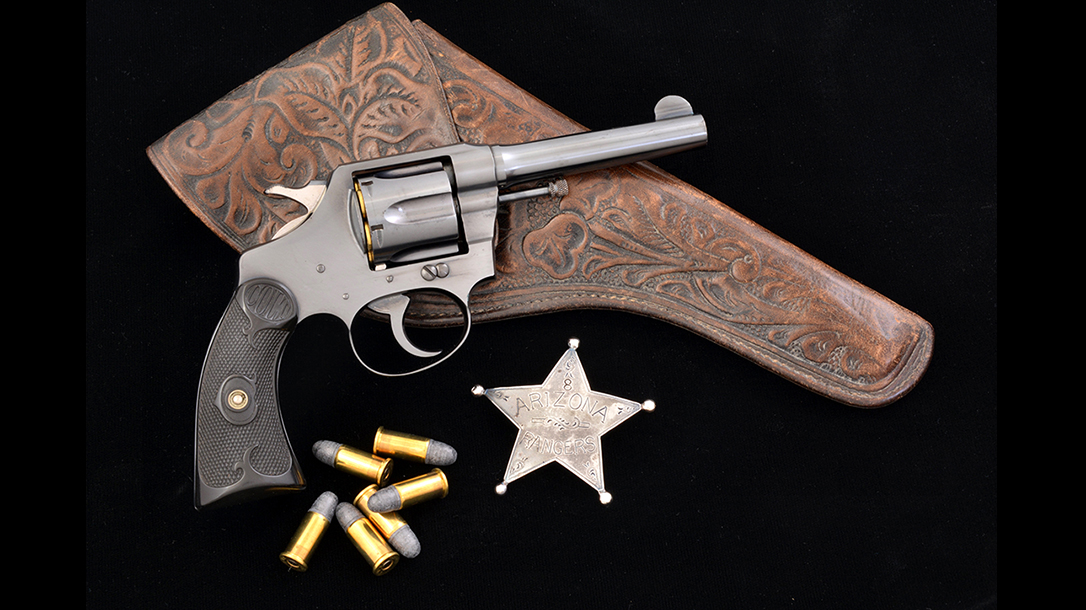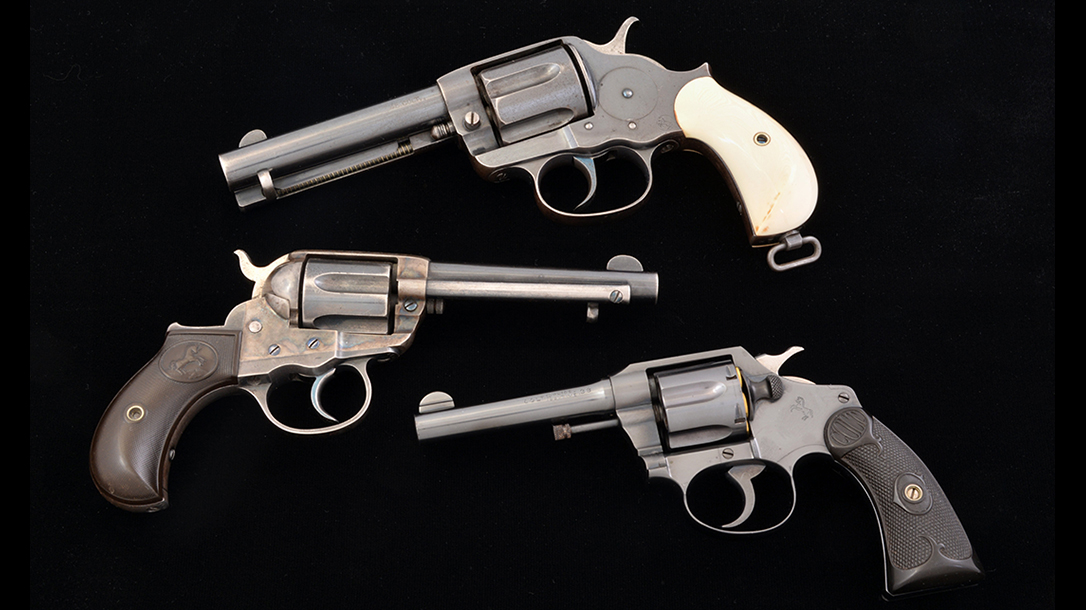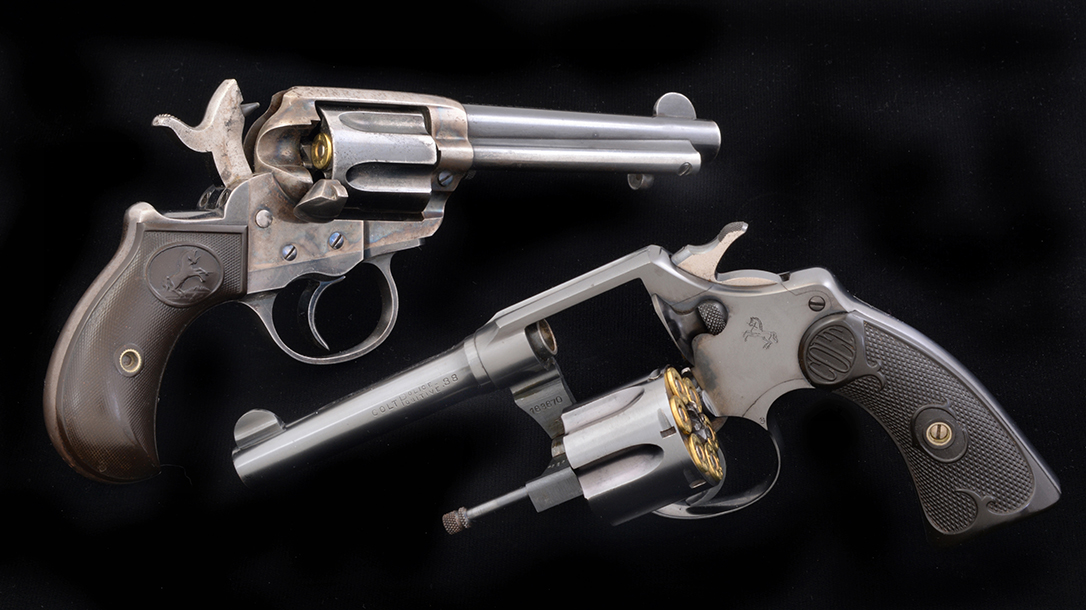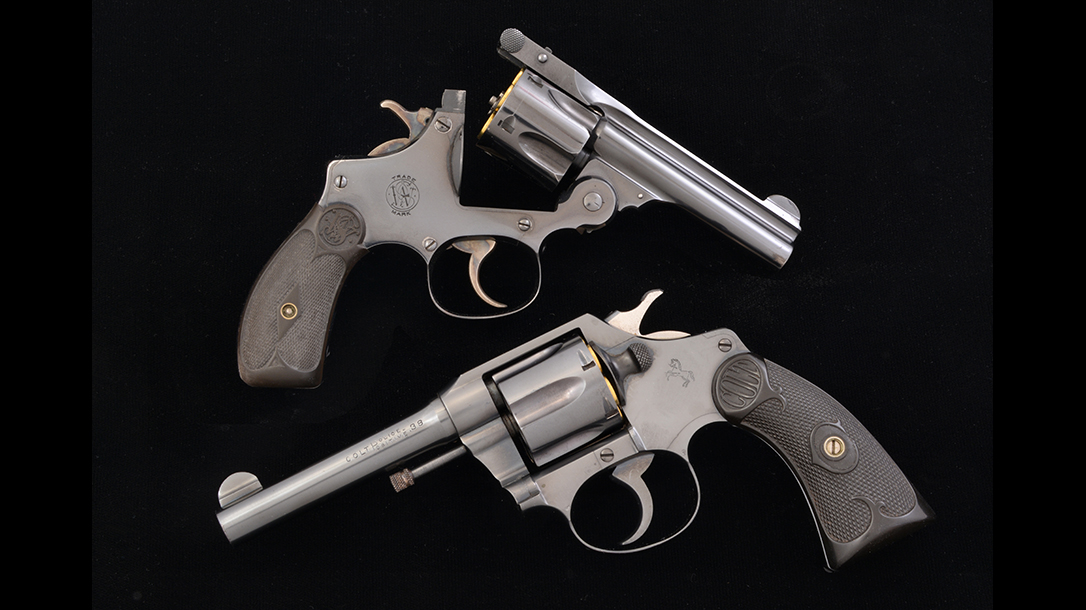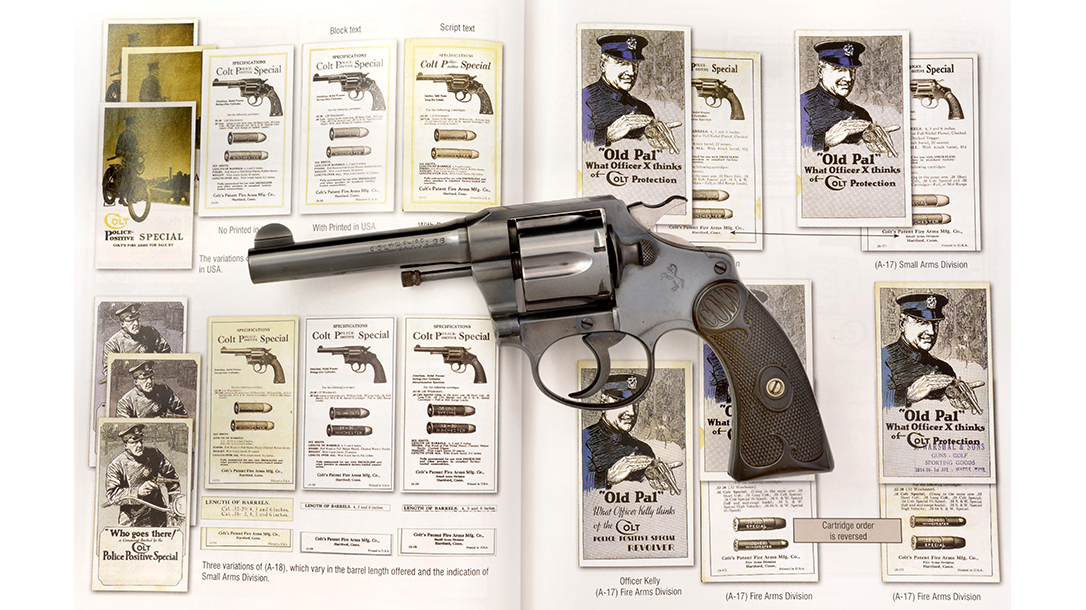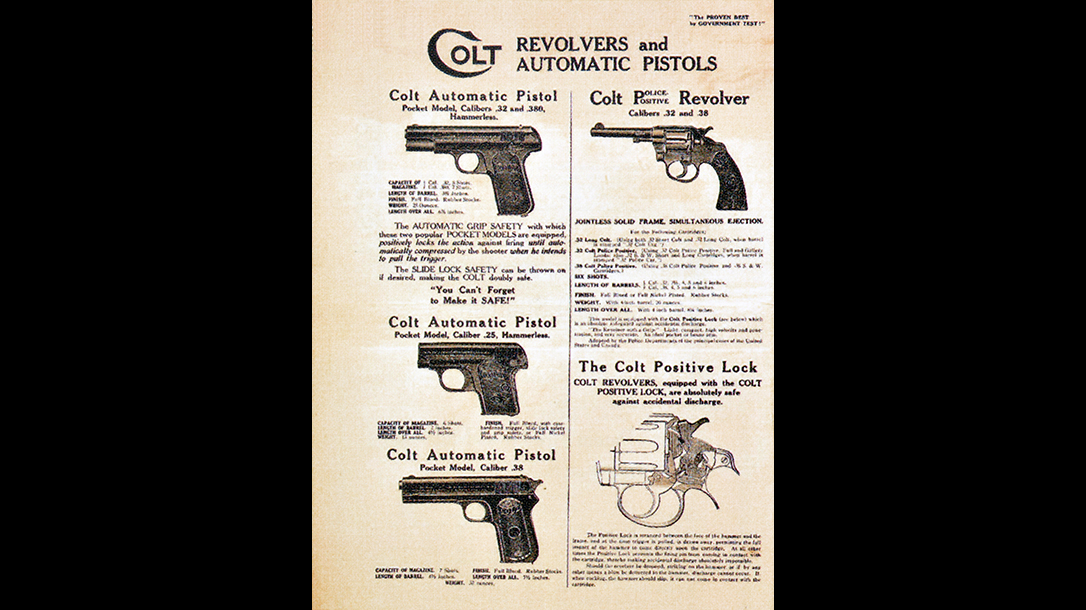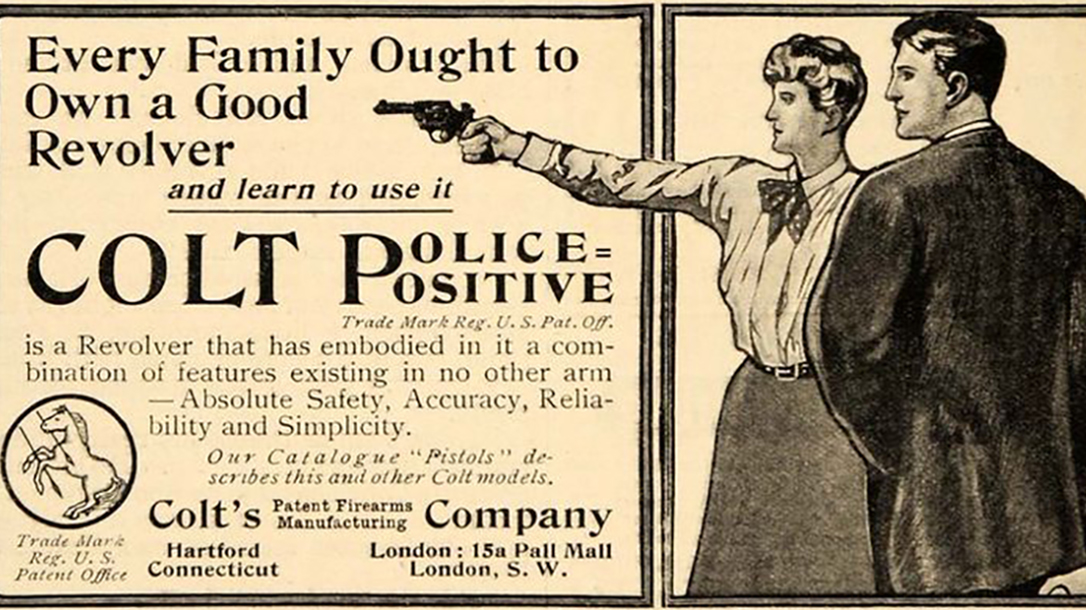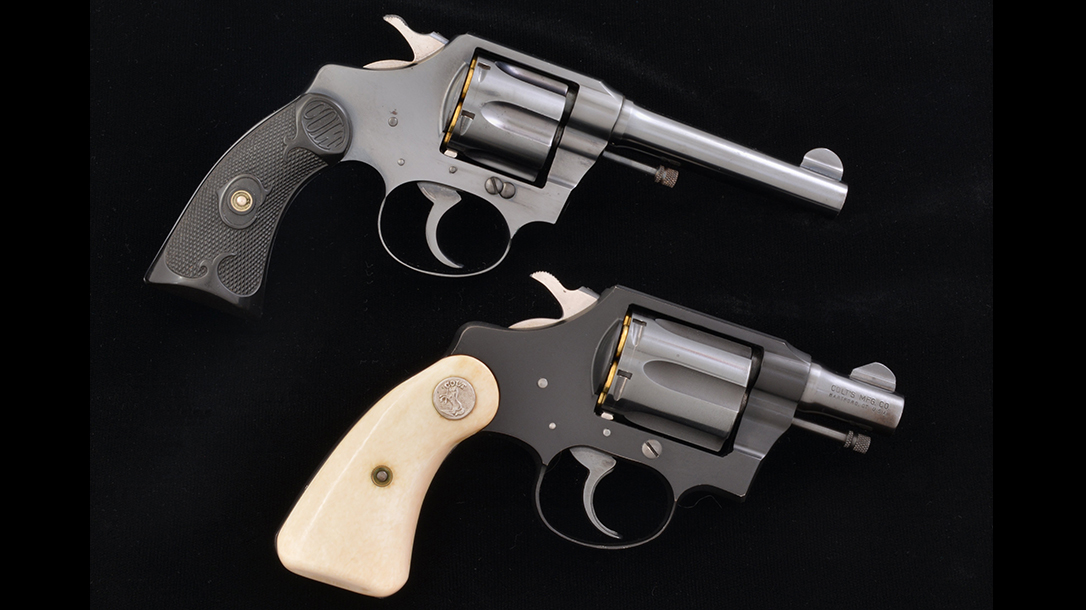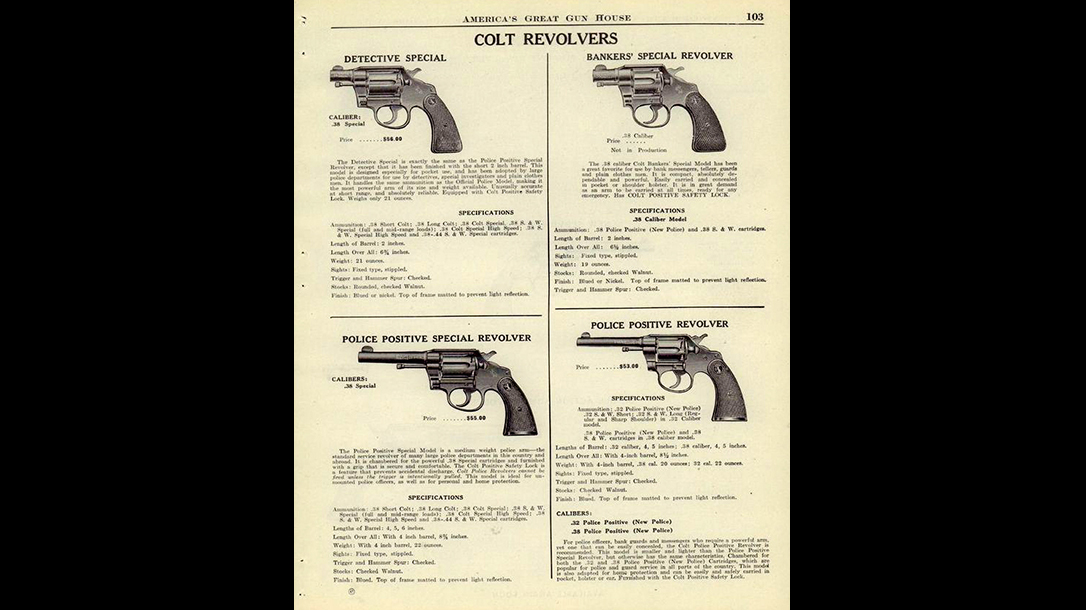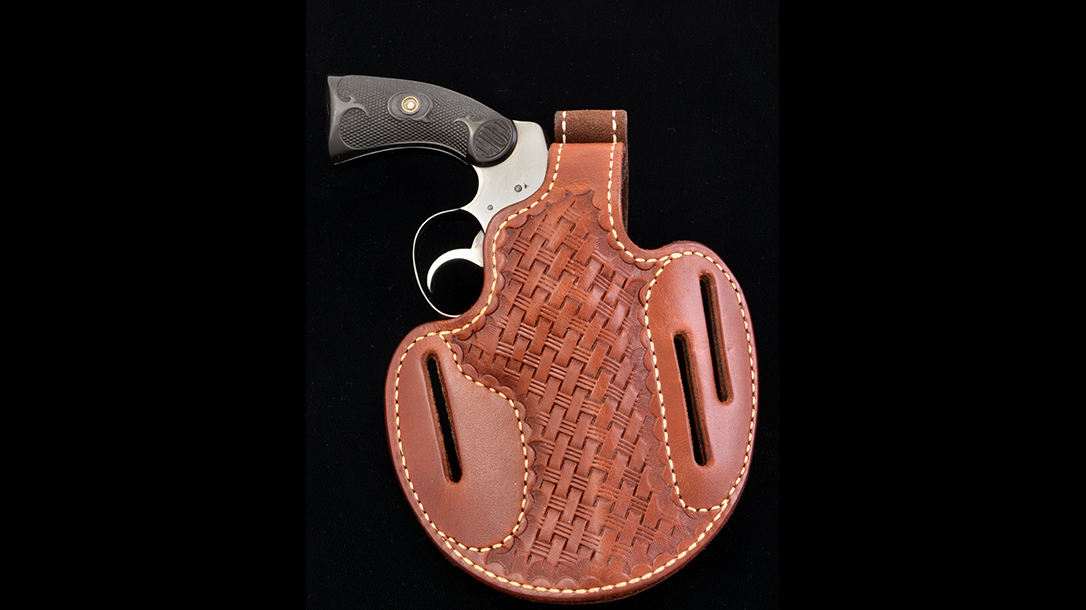Double-action cartridge revolvers had a somewhat unremarkable beginning in the American West. This was mostly due to the Civil War.
Imported and American-made double-action percussion revolvers were carried by both Union and Confederate soldiers. However, many of them did not perform well under battlefield conditions or were awkward to handle; others, while well made and innovative in their design, simply confounded their users, like the .36- and .44-caliber Starr revolvers issued to Union troops in 1861 and 1862. They were held in such low regard by men in the field that the Ordnance Department requested that Starr produce a more traditional single-action version of the gun. The single-action model became the most prolific of the Starr revolvers. Production of the 1863 version reached 25,000 by the end of 1864. The Starr was the third most-issued handgun during the Civil War. The revolver most often carried by federal troops was either the Colt 1851 Navy or 1860 Army. The latter was favored by the cavalry.
Colt’s Early Double Actions
Colt managed to steer clear of manufacturing double-action revolvers until well after the Colt Single Action Army had become the standard U.S. military sidearm in 1873. Even then, it took Colt until 1877 to introduce its first double-action revolvers: the .38-caliber Colt Lightning and .41-caliber Thunderer. Both got a rather lukewarm reception. A year later, Colt introduced the larger Model 1878. It was chambered to fire the same cartridges used in the Single Action Army. The 1878 was eventually offered in a variety of calibers, including the .32-20, .38-40, .38 Colt, .41 Colt, .44-40, .44 Russian, .44 S&W, .45 Colt and even .22 rimfire. For export to Europe, models were also available in .450, .455 and .476 Eley.
Advertisement — Continue Reading Below
A much larger gun than the Lightning and Thunderer, the 1878 had both heft and style. It sported a distinctive bird’s-head grip with a lanyard ring. The barrels were as short as 2½ inches up to 12 inches. Most models were fitted with 4¾-, 5½-, 7½-inch barrels. An 1890 catalog page for the gun described it as a “New Double Action, Self-Cocking, Central Fire, Army, Six Shot, .45 Inch Caliber, Revolving Pistol.”
Single-Action Trend
Colt did well overall with its first double actions. But the majority of lawmen, outlaws and cowboys still preferred single actions. Author and historian Joseph G. Rosa told an interesting tale in one of his books about a writer for the New Mexico Democrat who observed a young cowboy deciding on the purchase of a new revolver in 1884. The gun shop’s proprietor reached into a display case and retrieved a handsomely mounted .45-caliber revolver and said, “How do you like this? It is the newest thing out—a double-action forty-five.”
Advertisement — Continue Reading Below
The cowpoke looked at the Colt Model 1878 and turned up his nose, “Ain’t worth a row of beans. No man ’cept a tenderfoot wants that kind of thing. Give me an old reliable all the time. Ye see, a man that’s used to the old style is apt to get fooled—not pull her off in time—and then he’ll be laid out colder’n a wedge.”
It was an opinion shared by many Civil War soldiers who had suffered with early double-action percussion revolvers. The first Colt double-action models had a lot to prove. The Colt Model 1877, however, was a somewhat quirky revolver in its own right, and that didn’t help matters much.
The Swing Of Things
Colt had put enough 1877 and 1878 double actions into the hands of its clientele by the early 1880s to consider the guns a success, but Smith & Wesson began to muddy the waters for Colt with a more innovative top-break design introduced in 1880. The first S&W double actions were small-caliber handguns that were no real match for Colt’s Models 1877 and 1878, but a year later, S&W introduced double-action .44- and .38-caliber models, and that quickly shifted the balance back to S&W’s corner, leaving Colt in the proverbial dust, at least briefly.
Advertisement — Continue Reading Below
Although Colt had based the Models 1877 and 1878 on the same design as the Peacemaker, the company had also been working on another approach: a revolver with a swing-out cylinder and an ejector rod that would facilitate faster loading and reloading and have a stronger one-piece frame design. In 1889, Colt unveiled America’s first swing-out-cylinder double-action revolver. It was an immediate hit with the military. The new Colt was adopted by the U.S. Navy as its standard-issue sidearm. In 1892, the Colt New Model Navy and Army were introduced, and both the U.S. Navy and Army ordered the latest .38 Colt models. This continued an unbroken chain of supplying revolvers to the U.S. military since 1855. That’s when the Colt Model 1851 Navy became the first standard-issue revolver.
Colt introduced a number of .32- and .38-caliber swing-out-cylinder variants between 1892 and 1903 (as well as the larger-caliber New Service in 1898, which was also adopted by the U.S. military and kept in production until 1941), but in terms of law enforcement use, the most significant and enduring handgun design came in 1905 with the Colt Police Positive.
Improved Design
Following the .32- caliber Colt New Police introduced in 1896 (and manufactured through 1907), the Colt Police Positive was an improved design with the cylinder rotating clockwise (instead of counterclockwise like previous models), a larger rounded cylinder release (beginning in 1909) and a positive lock (thus the name) that prevented the firing pin from coming in contact with the cartridge unless the trigger was pulled. The pistol’s internal safety blocked the hammer until the trigger was pulled. This prevented an accidental discharge if the gun was dropped. In the Old West, it was common to carry a single action with the hammer resting on an empty chamber. This was carried on even with double-action models prior to the Police Positive.
Advertisement — Continue Reading Below
As noted by late Colt firearms historian R.L. Wilson in “The Book of Colt Firearms,” the Police Positive .38 served two purposes. First, it succeeded the Lightning, which had been discontinued at the end of 1904. Second, to quote from a 1905 Colt catalog, “It will meet the great demand for an arm similar to the New Police, caliber .32, but larger in bore, with the greatest penetration, velocity and range. As a .38 caliber Pocket Revolver it has no equal.” And it didn’t.
Colt Police Positive By The Numbers
Built on Colt’s “D”-frame, the Police Positive was regarded as a small-frame revolver. It remained in production until 1943, with total sales surpassing 406,000. It also provided the frame from which the Colt Banker’s Special and Detective Special would evolve from in the 1920s.
Advertisement — Continue Reading Below
Although Colt offered models with 2-, 5- and 6-inch barrels, the standard 4-inch-barreled Police Positive became the handgun of choice for so many in law enforcement for nearly 40 years. And bear in mind that between 1905 and what we tend to regard as the end of the “Old West” in the early 1920s, there were already more than 150,000 Police Positive revolvers in use. When its production ended, it was by far the most ubiquitous Colt revolver carried by lawmen—as well as those outside the law—and private citizens alike.
From the East Coast in the early 1900s, where uniformed officers were carrying the Police Positive, to the still-wild expanses of the Southwest, where lawmen were still on horseback, the 4-inch-barreled, .38 Colt Police Positive proved to be an ideal carry gun or backup gun to a larger-caliber Colt single action. With an overall length of 8½ inches and an unloaded weight of just 20 ounces, it was a relatively lightweight pistol to carry in a belt holster or slip into a coat pocket. The Police Positive was also available in .32 Colt and the new, more powerful .38 Special beginning in 1908 (by extending the frame and cylinder slightly for the longer, more powerful S&W Special. The guns also had their own serial number sequence).
Reliable .38
The .38 Special rounds would not fit in the .38 Colt (.38 S&W) cylinders, so it wasn’t possible to load the wrong cartridge; however, the .38 Police Positive Special could shoot .38 Colt and .38 S&W rounds. Carrying on the Police Positive line for a remarkable 88 years, the .38 Police Positive Special was manufactured until 1995. By that time, Colt had produced more than 1.5 million Police Positive revolvers. This is just one of them.
Advertisement — Continue Reading Below
Editor’s Note: Special thanks to Mike Harris of the Allegheny Trade Co. in Duncansville, Pennsylvania, for acquiring the circa-1924 Colt Police Positive for this article.
This article was originally published in the spring 2018 issue of “Guns of the Old West.” To order a copy and subscribe, visit outdoorgroupstore.com.
